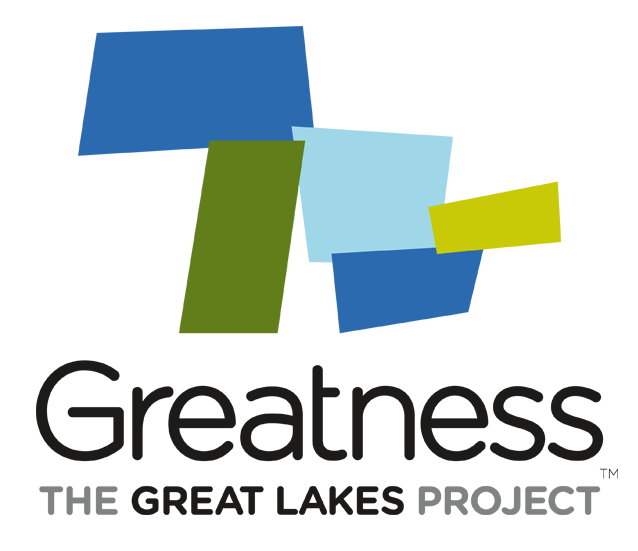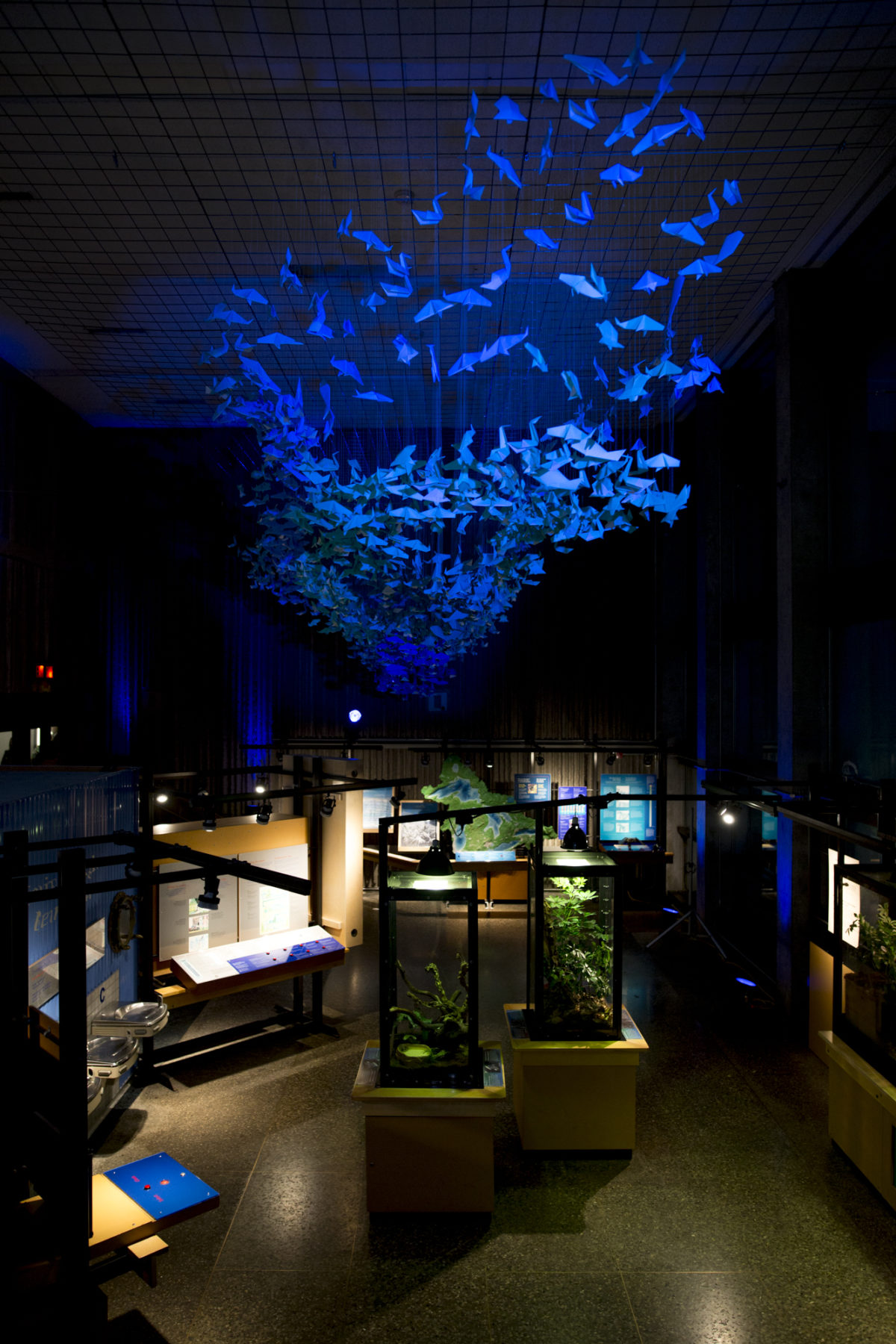
This week we’re sharing our conversation with Labspace Studio, creators of Deep Blue, the winning proposal for Great Art for Great Lakes Toronto.
On October 12th, 2017, Deep Blue was officially unveiled to the public by The Honourable Elizabeth Dowdeswell, Lieutenant Governor of Ontario at the Ontario Science Centre. Great Art for Great Lakes is part of a larger initiative: Greatness: The Great Lakes Project, which began at a 2015 roundtable convened by Her Honour. The participants, drawn from business, the arts, science and sport, resolved that “a bold and noble initiative” could make the Great Lakes a powerful symbol of “greatness” for the 40 million residents of the Great Lakes basin.
Deep Blue is a stunning, collaborative art installation comprised of more than 2000 origami swans, bass, sturgeon, carp and Blanding’s turtles, depicting the bathymetry of majestic Lake Ontario. Deep Blue was created by Labspace Studio in collaboration with 12-year- old Great Lakes Trust junior ambassador Daniel Ranger–with help from visitors of the Science Centre during origami workshops held in August 2017. Read on to see what the artists had to say about their experiences creating collaborative, community-engaged artwork.
Who is Labspace Studio?
Labspace is an artist collective and creative studio founded in 2007 by John Loerchner and myself, Laura Mendes.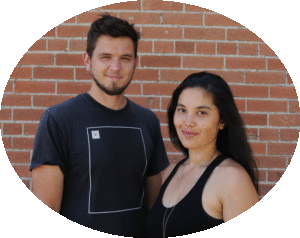 We create public, site-specific, and participatory art projects, often combining elements of installation, sculpture, video, and public-generated content.
Our projects stem from our desire to connect on a genuine level with others and to uncover intricate connections between people and places.
We create public, site-specific, and participatory art projects, often combining elements of installation, sculpture, video, and public-generated content.
Our projects stem from our desire to connect on a genuine level with others and to uncover intricate connections between people and places.
What inspired you to create Deep Blue?
As interdisciplinary artists we are often trying to find new ways of collaborating with others and experimenting with new materials. Working outside of galleries and in the public domain is what really drives our art practice. We are outdoor enthusiasts and water ambassadors and for this reason we’ve created a number of projects over the years that speak to the ecology and history of our lake and ravine network here in Toronto. We’re also very interested in data collection, public participation, and finding ways to integrate peoples’ input into our creative process and final artwork.
The GAGL project gave us an opportunity to meld all these interests of ours while working with a material that is fairly new to us — origami. Last year we attended an art exhibition where we met Daniel Ranger, a brilliant young kid who had created a series of adorable snail habitats out of origami. It was beautiful work and inspiring to see someone that young advocating for the environment and presenting his artwork alongside professional artists. We contacted Daniel right away with the idea to collaborate. We thought, with Daniel’s expertise in origami, and our expertise in creating large-scale installations, we could create something really special together.

Deep Blue Unveiling (from L to R) Great Lakes Trust Junior Ambassador & Deep Blue collaborator Daniel Ranger, Labspace Founders Laura Mendes & John Loerchner). Photo by Nakita Krucker
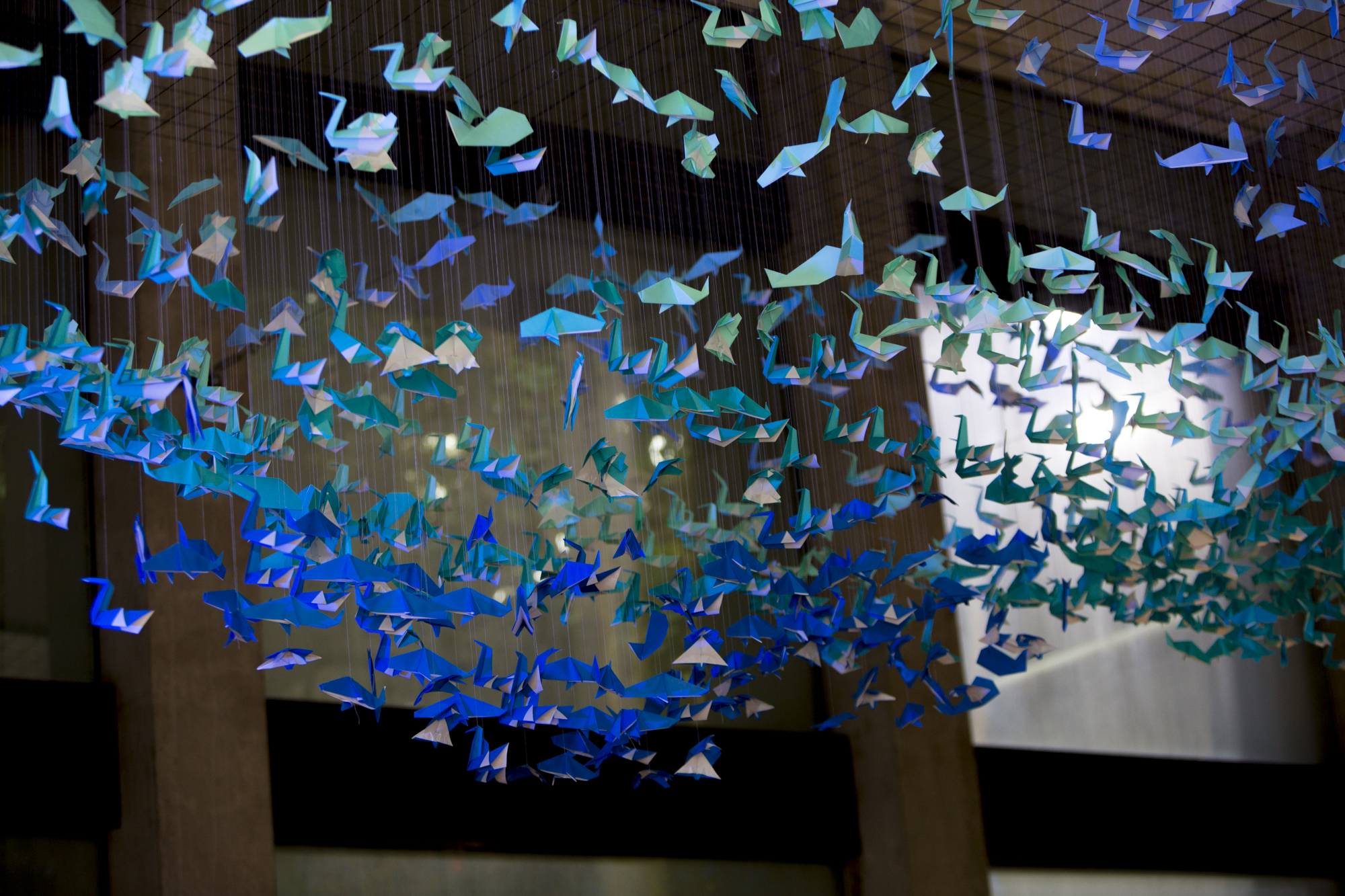
Deep Blue. Photo by Nakita Krucker.
GAGL: Let’s start by talking about your motivation to create community-engaged, collaborative artwork.
A successful art project in our opinion is one that has the ability to resonate with people who have no prior experience looking at art. In our experience, the projects that have been our most successful are the ones that people can touch, feel, and interact with. Often these projects are the ones that people have the opportunity to participate in at some level, or in some cases, be a part of the actual process of creation. These types of projects are the most rewarding for us and they motivate us to continue working with a collaborative mindset.
“We really enjoyed hanging out at the Ontario Science Centre and talking to kids about the ecology of Lake Ontario…Giving them something like origami to work with was a great entry point into important topics like invasive species and habitat protection.”
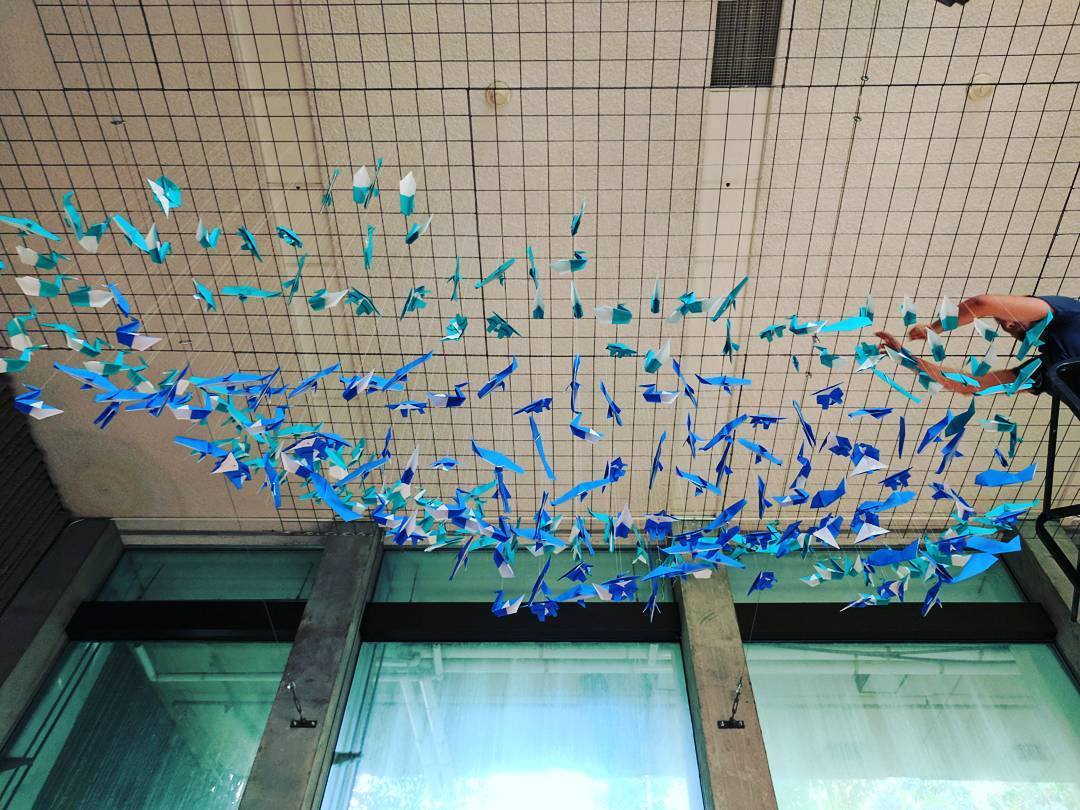
Deep Blue Installation. Photo by Labspace Studio
What do you hope that people take away from it?
Firstly, we hope people feel a sense of beauty and wonder standing beneath the vastness of the work. Once they start to notice the individual pieces of origami, each handmade by a youth collaborator, we hope they’ll begin to see the lake as something intricate and complex — a living and breathing entity that we’re all connected to and responsible for protecting.

Deep Blue Ribbon-Cutting at the Ontario Science Centre. (From L to R) Ontario Science Centre CEO Maurice Bitran, Great Lakes Trust Junior Ambassador & Deep Blue collaborator Daniel Ranger, The Honourable Lieutenant Governor of Ontario Elizabeth Dowdeswell. Photo by Nakita Krucker.
“I think people are most motivated to care about their great lakes when they have an emotional connection and bond to them. As socially and environmentally engaged artists, I think our role is to harness those opportunities to facilitate meaningful, tactile, and emotional connections to the land.”
GAGL: We are curious to learn more about the process of co-creation in your community-based projects. Could you describe the process in more detail and provide one or two examples?
We are never following one specific process in our art practice. Every project and process is ultimately determined by the site or context in which we’re creating the work. This makes each project we undertake an exciting new challenge. We’ve created projects in public parks, office buildings, shopping malls, galleries, storefront windows, on public transit, and even inside an abandoned funeral parlour. Each site presents a unique opportunity to explore new materials, uncover hidden stories, and connect with others.
Don Was Here (2015) was a public art commission we produced for No. 9 Contemporary Art & The Environment. For this project we physically retraced the historical pathway of Toronto’s Don River. Our goal was to ignite civic interest in this often ignored watershed. In addition, we produced an interactive website that the public could access along the trail to view historical maps and photos of the surrounding valley. People were encouraged to upload their own photos of the river and help build an interactive map of the area.
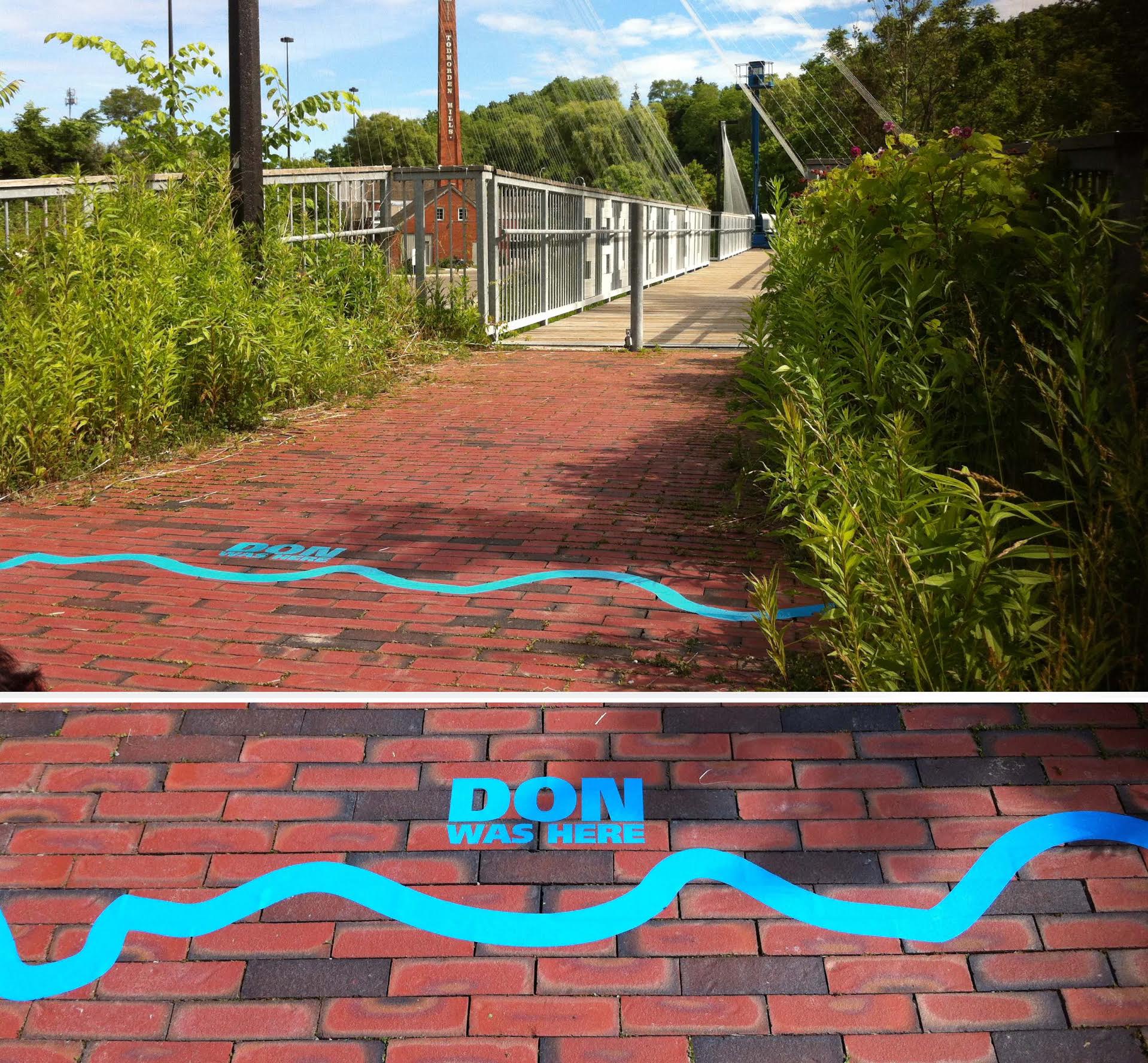
Don Was Here, 2015, by Labspace Studio. Photo by Labspace Studio.
GAGL: What were your favourite moments during the process of creating Deep Blue?
We really enjoyed hanging out at the Ontario Science Centre and talking to kids about the ecology of Lake Ontario. Children are intuitively curious and enjoy tactile projects. Giving them something like origami to work with was a great entry point into important topics like invasive species and habitat protection. It was also a pleasure working with our team of assistants in the Living Earth Hall and watching all the origami pieces come together as one organic form.
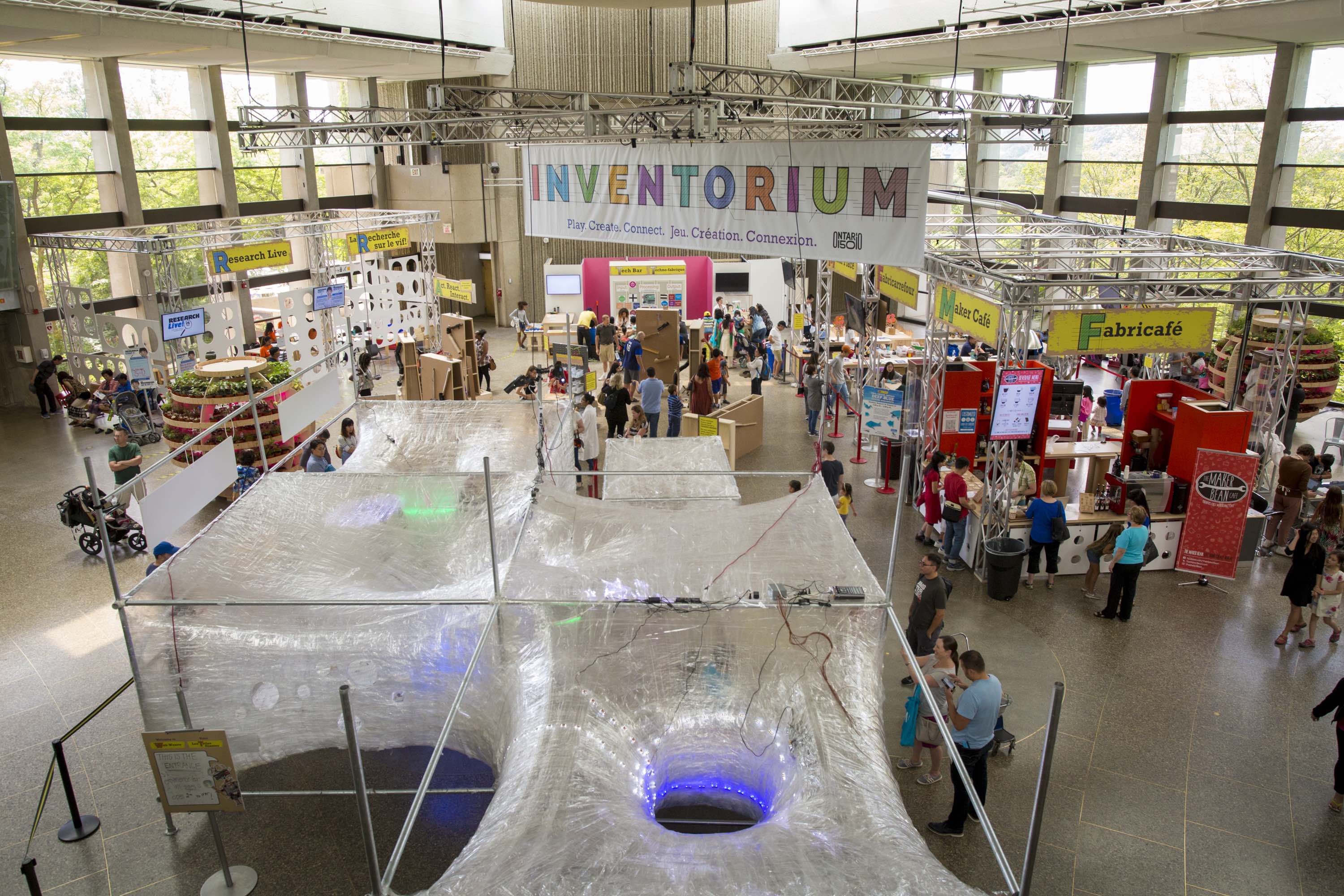
Deep Blue Origami Workshop at the Ontario Science Centre’s Inventorium.
Photo by Nakita Krucker

Deep Blue Origami Workshop at the Ontario Science Centre’s Inventorium. Photo by Nakita Krucker
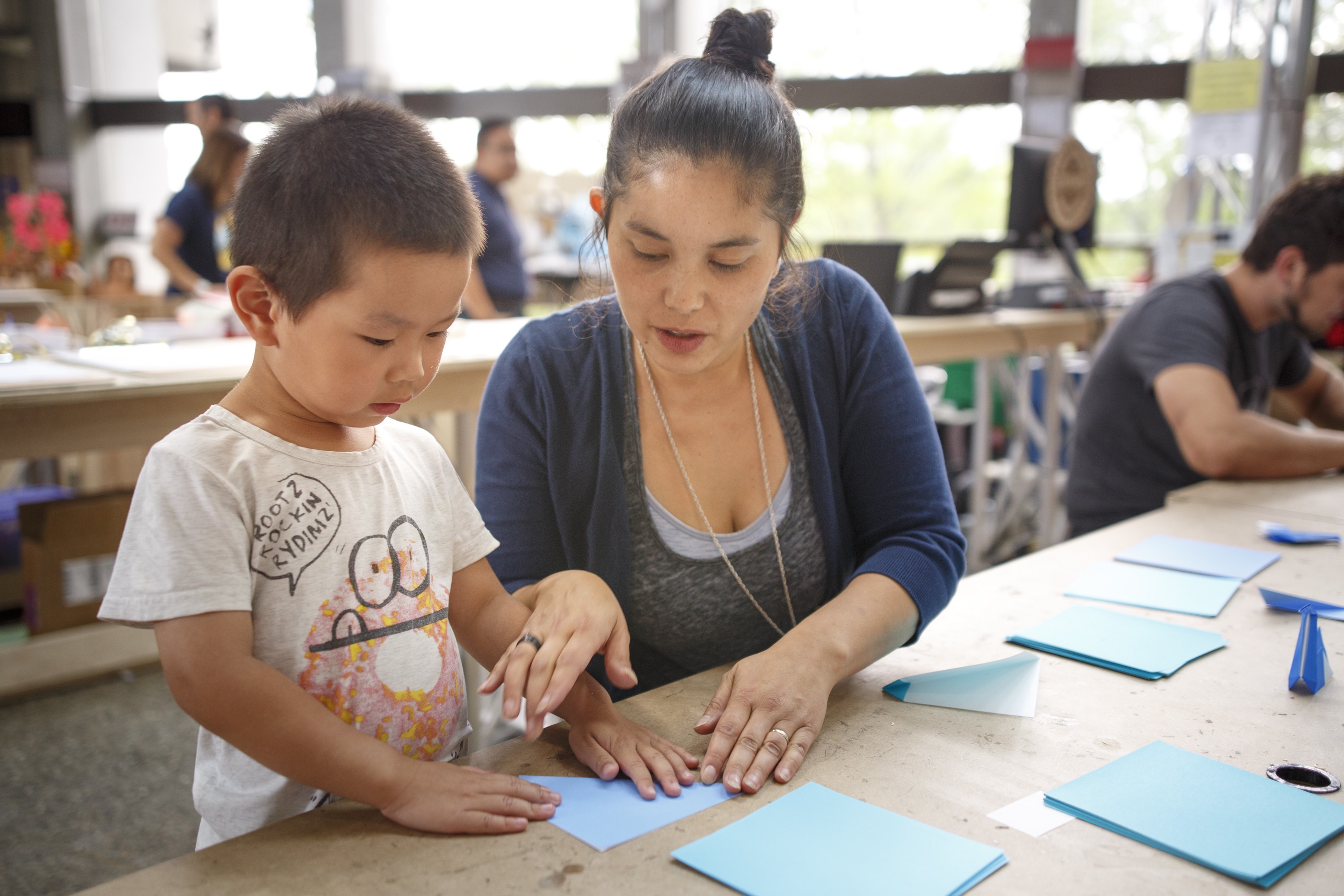
Deep Blue Origami Workshop at the Ontario Science Centre’s Inventorium. Photo by Nakita Krucker
GAGL: What is your perspective on the role of public art for communities?
I think the best kind of public art has the ability to inspire, educate, and foster positive action within communities. The worst kind of public art is the kind that leaves you feeling indifferent.
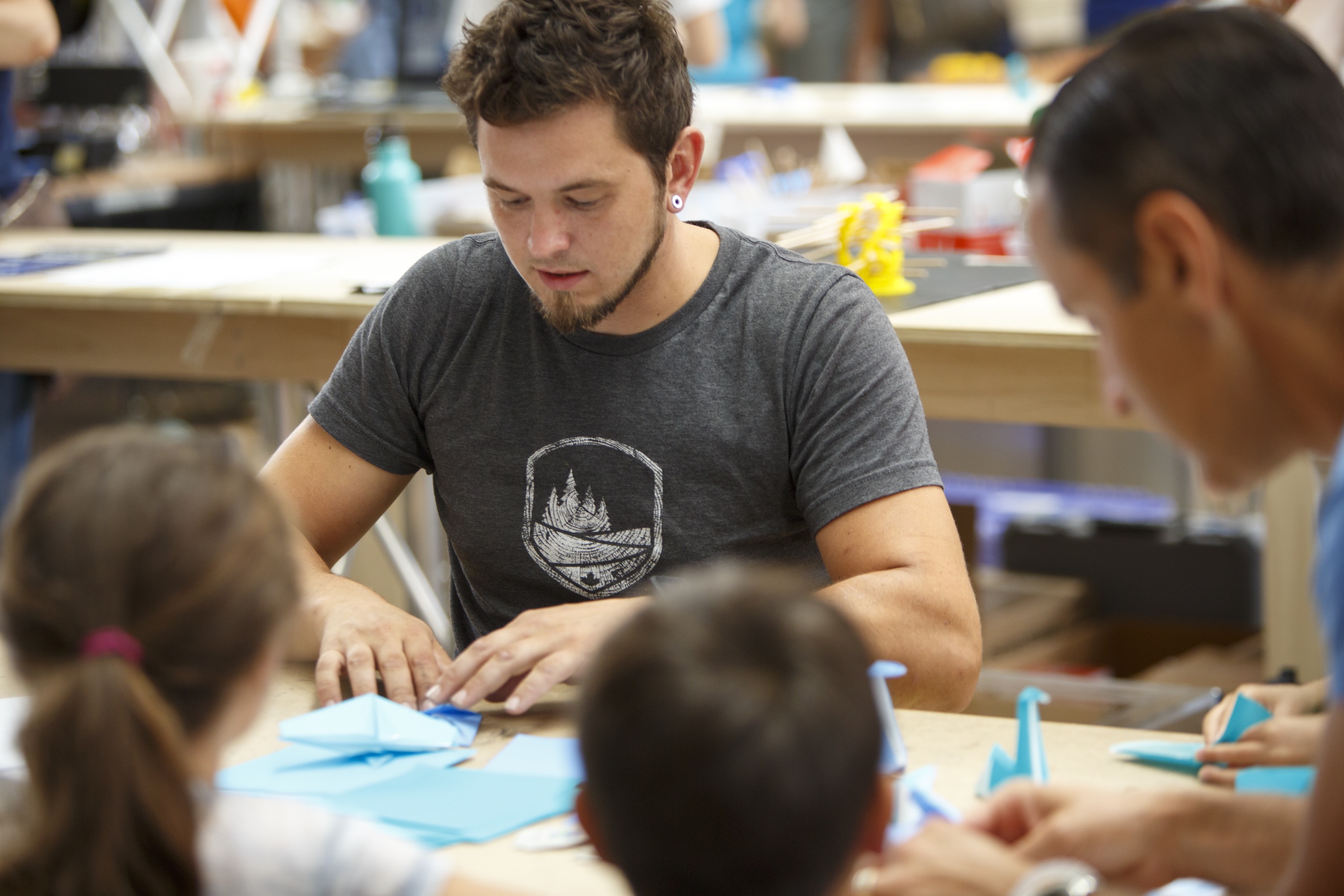
Deep Blue Origami Workshop at the Ontario Science Centre’s Inventorium.
Photo by Nakita Krucker
GAGL: What makes a Great Lakes Community?
A Great Lakes Community is one that’s comprised of individuals who take ownership and pride of their lake. I think people are most motivated to care about their great lakes when they have an emotional connection and bond to them. As socially and environmentally engaged artists, I think our role is to harness those opportunities to facilitate meaningful, tactile, and emotional connections to the land.
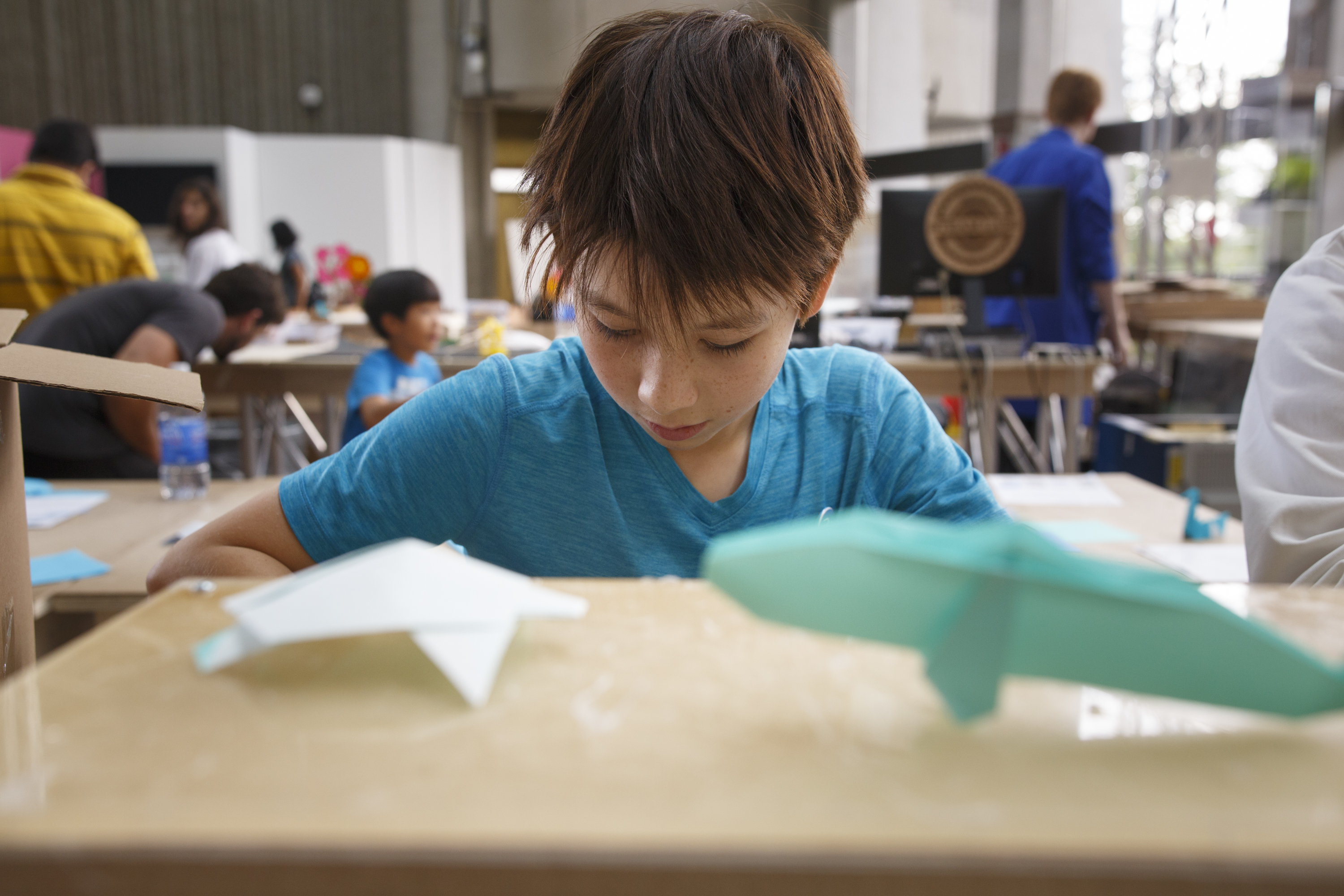
Daniel Ranger. Deep Blue Origami Workshop at the Ontario Science Centre’s Inventorium. Photo by Nakita Krucker
GAGL: If there were not any constraints, what would be your dream project?
Travelling to all the National Parks across Canada and working with local materials and communities to build something larger and more profound than the sum of its parts.
Deep Blue will remain on permanent display at the Ontario Science Centre, showcasing the ecology and grandeur of Lake Ontario. Deep Blue is included with general admission. For more information and to purchase tickets, please visit OntarioScienceCentre.ca

Deep Blue Installation. Photo by Labspace Studio.
For more information on Labspace Studio and to get on their mailing list for future events, please visit labspacestudio.ca

Deep Blue Unveiling at the Ontario Science Centre. (From L to R) Co-Founder of Greatness: the Great Lakes Project Karen Kun, The Honourable Lieutenant Governor of Ontario Elizabeth Dowdeswell, Co-Founders of Labspace John Loerchner and Laura Mendes, Artist and Great Lakes Trust Junior Ambassador Daniel Ranger.
